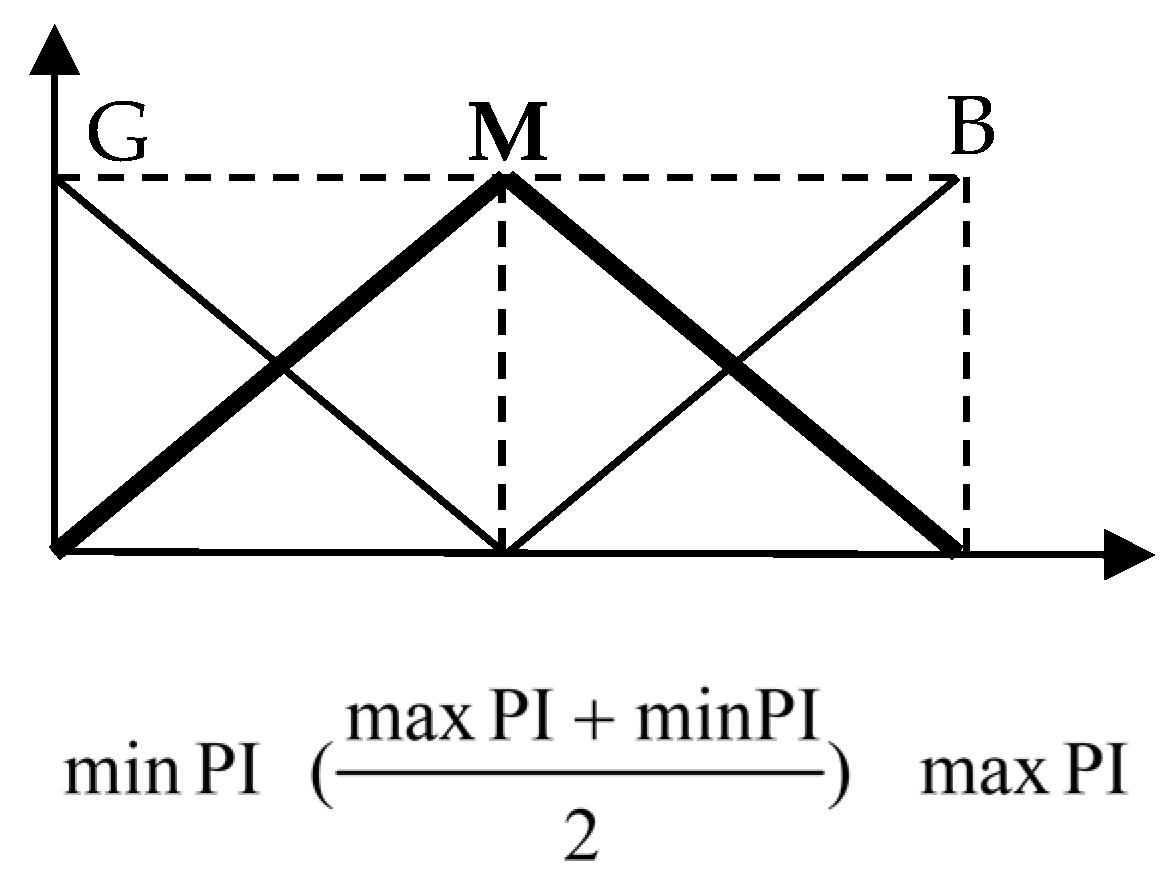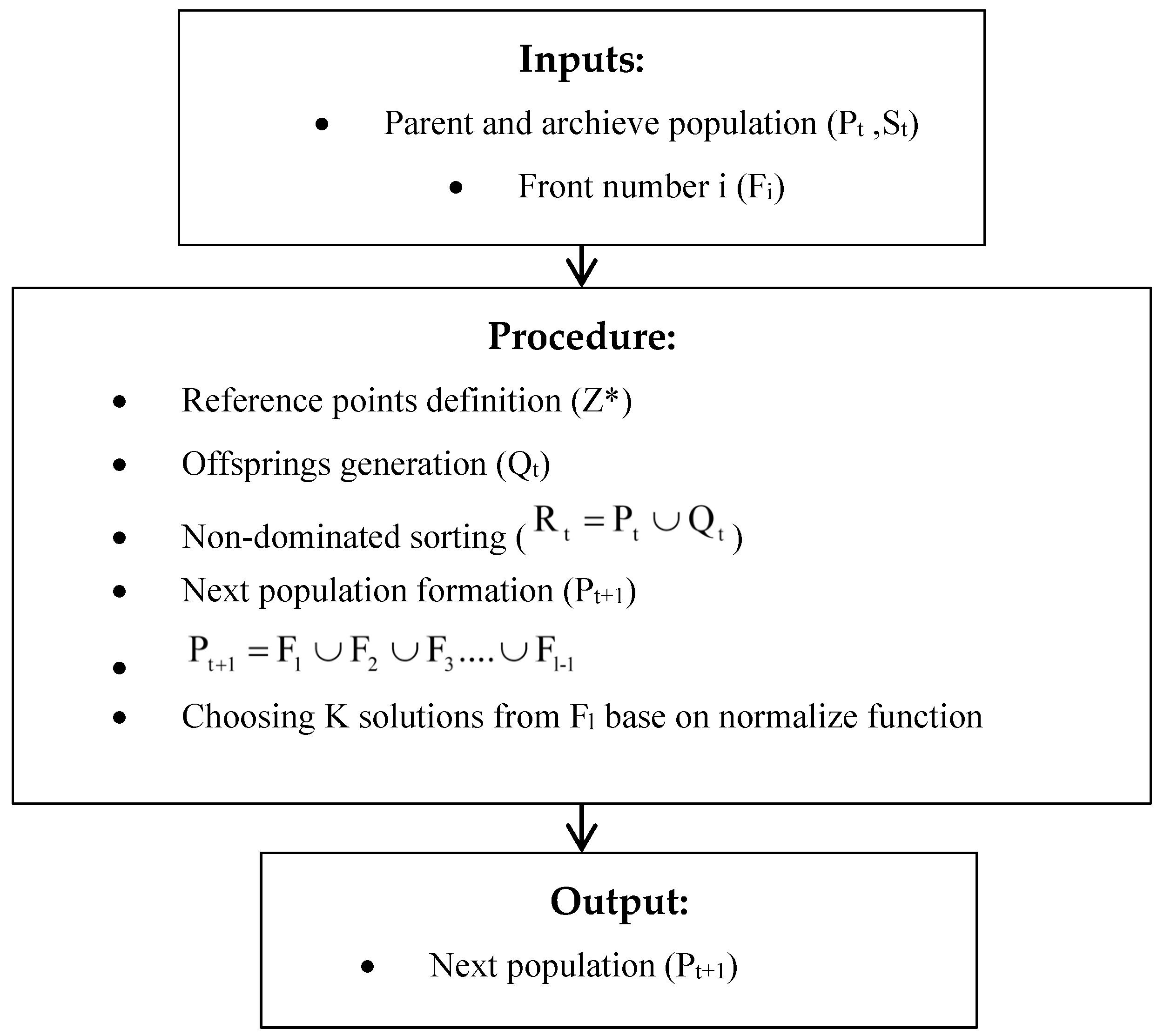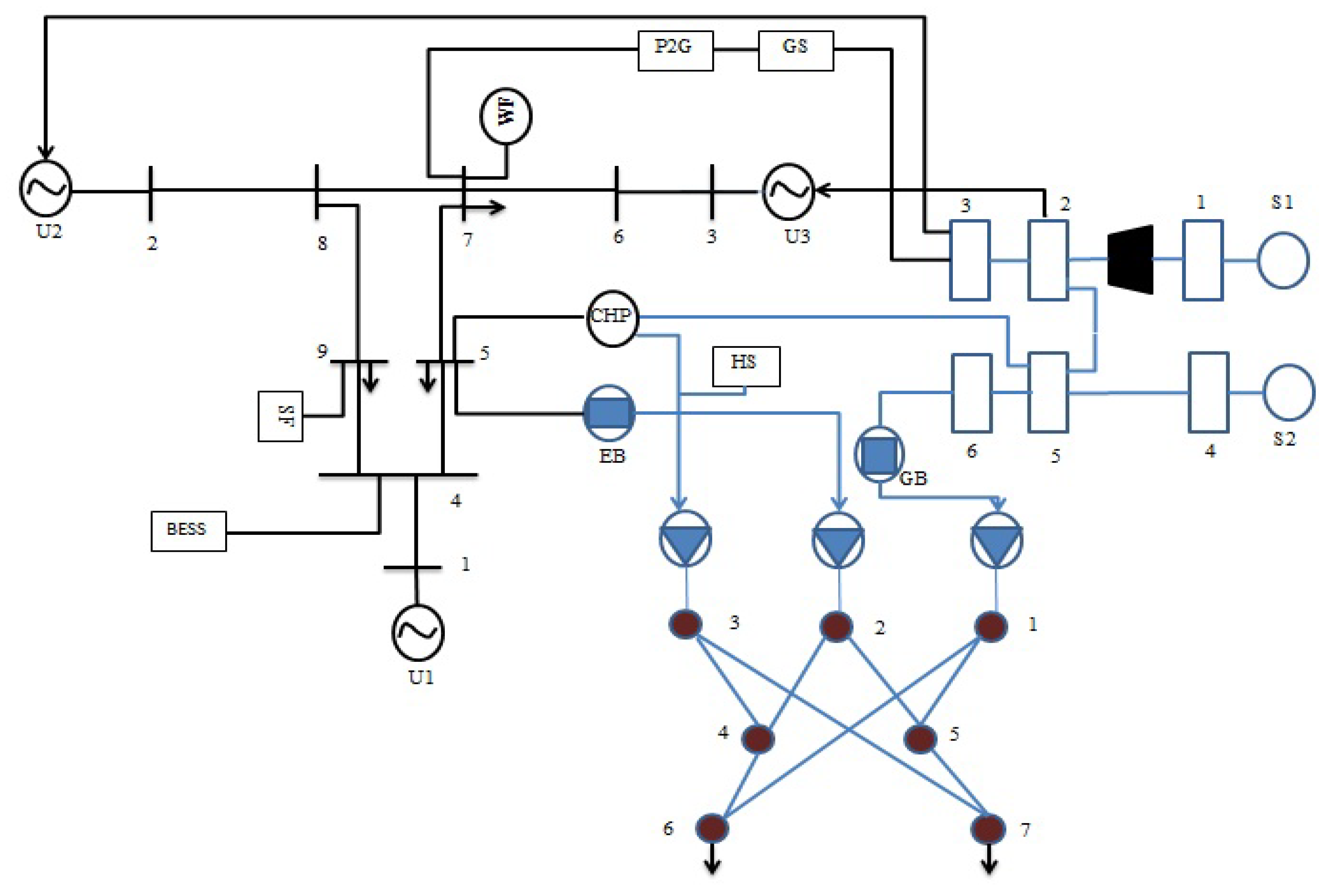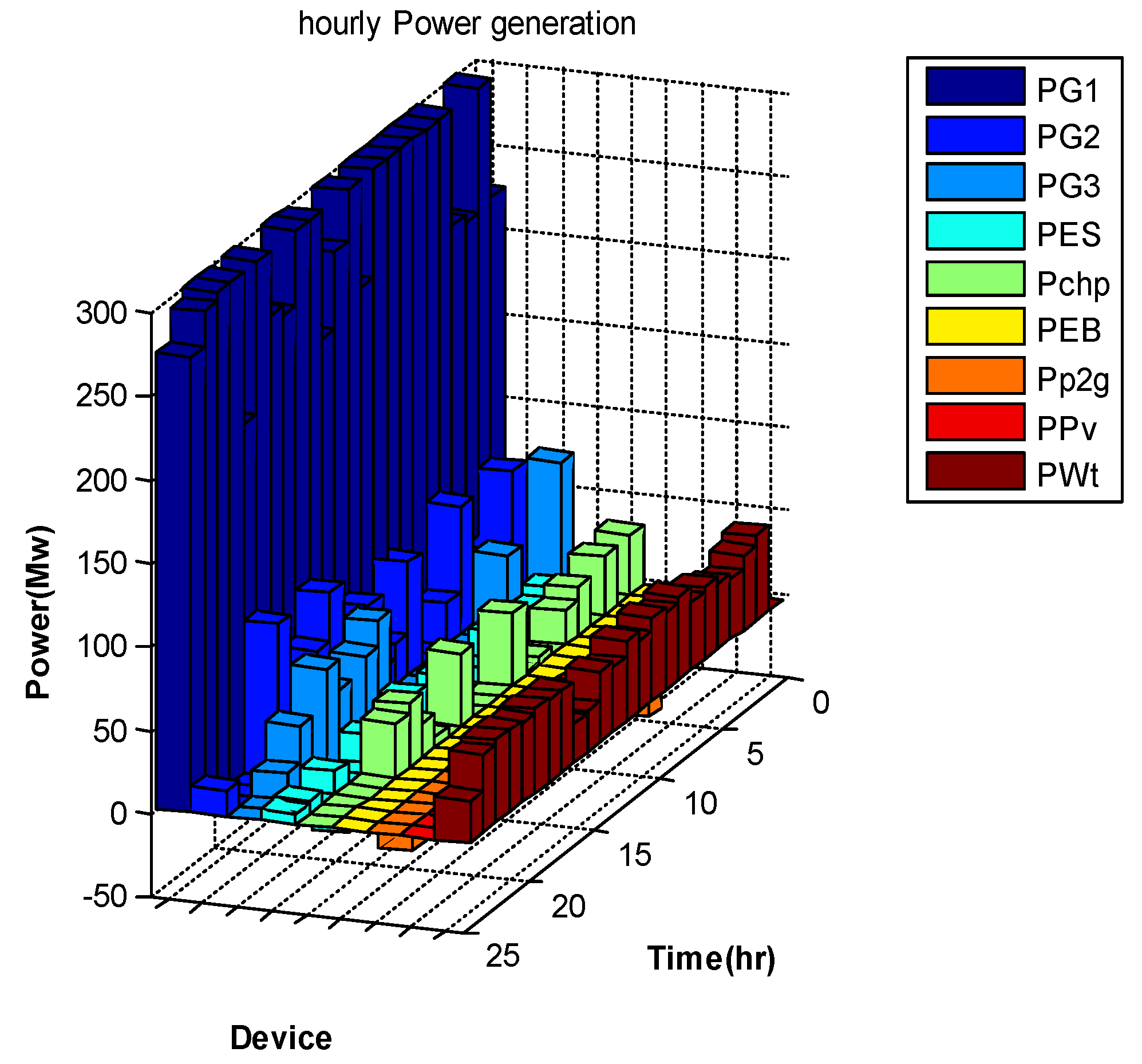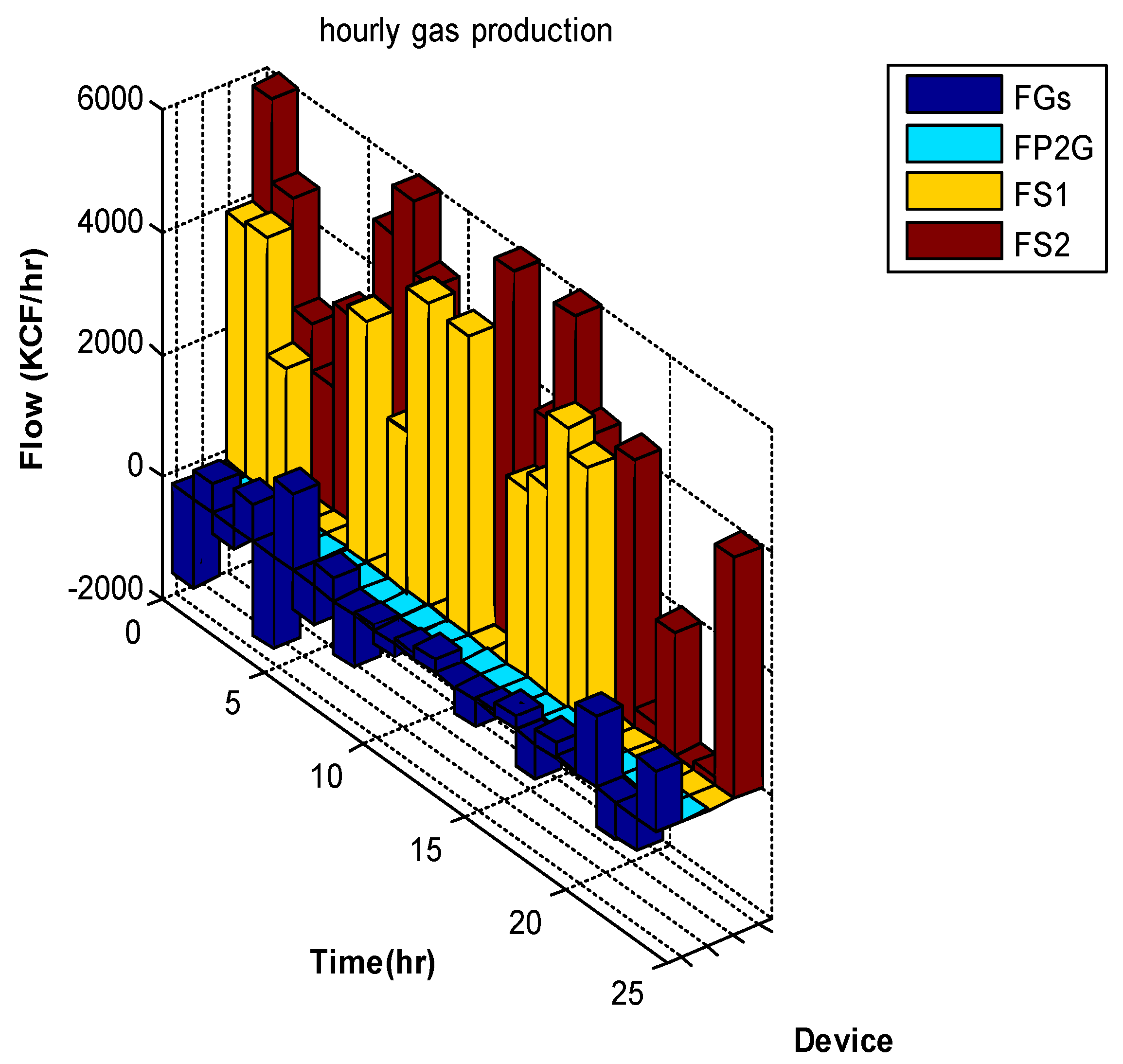Today, the contrast between financial growth and energy spending is becoming more serious. While the widespread use of advanced technologies such as distributed generation, energy storage devices, and various converters has partially developed the current energy structure, researchers are still searching for an original method to further increase overall energy productivity and improve economic efficiency, especially regardless of the uncertainty of parameters. The IES, benefiting from the improvement of energy conversion applied science and the concept of the energy hub, is introduced to resolve this conflict more effectively. The energy management system (EMS), as the main component of the IES, collects data and solves an optimization problem to determine the set point for the parts. It obtains the essential information from the system components to appropriately allocate the power of energy resources. By solving some desired objective function, the EMS decision is made. This may be minimizing losses or costs associated with air pollution, operation, start-up, and shutdown of facilities in all subsystems. To achieve these goals, the EMS should be designed optimally. Unlike a conventional separate energy system, the IES is more complicated and offers more flexibility in energy supply. Because of the different energy combinations, an IES can perform better to achieve optimal technical goals. Many researchers have conducted significant studies in this regard. These works are in different fields and have different objectives. The differences include different infrastructures, different paths to optimal operation, and differences in time frames. Some of this work is presented as follows. In Ref. [
1], a new optimization framework is proposed in light of the Stackelberg game, which considers the demand response program and renewable energy generations to maximize profits and minimize energy costs. It addresses renewable energy generation uncertainties and considers district heating network characteristics while maintaining user thermal comfort. While demonstrating enhanced renewable energy consumption through simulations, the study acknowledges limitations including model complexity, regional specificity, implementation challenges, forecasting dependence, and potential inequities. In Ref. [
2], the cooperation framework of an IES is discussed to ensure the safety of the system. In the cooperation model, the proposed algorithm is based on the alternating direction method of multipliers. It introduces novel heat pump modeling and a decentralized algorithm for independent thermal and electrical network management. While promising, the approach acknowledges simplifications, data dependency, and implementation complexities that may hinder real-world application. In Ref. [
3], an optimization problem is introduced focusing on reducing the operating cost and increasing the efficiency of the system. It demonstrates cost reductions and enhanced flexibility through detailed modeling, and its complexity and computational demands, along with limited scalability and reliance on P2G efficiency, pose challenges. Ref. [
4] proposes an effective energy management model for optimal 24 h operation that takes into account the uncertainty of production and consumption units. It demonstrates economic benefits through reduced costs and increased revenue, validated with real-world data and compared against a pattern search method. However, the model’s complexity, computational burden, and reliance on accurate forecasting limit its scalability and real-world applicability due to simplifying assumptions. In Ref. [
5], a novel operation method is presented that can consider the behavior of loads to limit the total cost in IESs. The optimization of operations is achieved by taking into account the dynamic model of heat loads and the customers’ heat satisfaction model, with the aim of minimizing the total cost. However, the increased model complexity requires advanced optimization tools, has limited scalability, and relies on simplifying assumptions about water tank behavior. In Ref. [
6], an optimization model is introduced to reduce the cost and improve the performance of the IES under uncertainty conditions. It suggests incorporating power-to-gas and demand responses into the economic dispatch model to enhance its flexibility. However, it overlooks the important objectives of reducing losses and air pollution. In Ref. [
7], different energy consumption sectors of the energy hub and their properties in the optimization problems were studied. It provides an overview of different energy hub systems and explores ways to improve their efficiency. It also examines various renewable energy systems and demand response programs. However, it only focuses on reviewing the current methods used in optimizing energy hubs. In Ref. [
8], based on the control of power grids, a mathematical programming problem is created to meet the system demand with the lowest production cost, lowest emissions, and lowest voltage deviation. It addresses various methods of optimal power flow (OPF), categorizes the main objectives posed in problem-solving, and ultimately delves into different intelligent algorithms employed in problem-solving. Ref. [
9] considers the coupling of various system components along with the impact of carbon emissions in optimizing integrated energy systems. It considers the quantification of the dispatch flexibility of the power system. Furthermore, it explores the simultaneous investigation of power-to-gas (P2G) and demand response. Ref. [
10] proposes an optimal operating scheme considering the reconstruction potential of the grid. In this paper, the objective function introduced in the problem is solely the cost function, which is optimized to its possible minimum through the utilization of optimal scheduling of combined heat and power (CHP), various energy converters, and hourly topology of the sub-systems. The article offers cost-effective day-ahead scheduling, enhanced flexibility, and resource utilization and supports renewable energy integration through comprehensive modeling of interconnected energy systems. However, its complexity may increase computational demand, and simplifications like neglecting the heat network and reliance on forecasting can introduce inaccuracies. Ref. [
11] presented a novel stochastic model for the optimal operation of an energy hub in terms of minimizing electricity and gas costs. In the proposed model, energy demand and electricity price are considered stochastic variables, and by considering these factors, the problem of optimal energy flow is addressed using the minimum operational cost objective function. This model integrates multiple energy carriers, considers uncertainty in renewables and load, and incorporates demand response, carbon trading, and power-to-gas technology. While it enhances energy hub flexibility and uses multi-objective optimization with clustering for efficiency, it also presents complexities in real-time implementation, computational burden, and reliance on accurate forecasting. In Ref. [
12], considering the technical and economic relationships between electricity and natural gas systems (NGSs), a mixed-integer linear programming (MILP) model is presented for optimal scheduling of microgrids (MG). The mentioned reference suggests utilizing microgrid benefits to lower system operational expenses. Additionally, the new modeling method incorporates real-time network constraints to guarantee secure network performance. However, it simplifies the natural gas network and heat transfer, relying on accurate input data and potentially introducing linearization errors. Despite these limitations, it demonstrates economic savings and flexibility in various operational scenarios. In Ref. [
13], the model for optimal operation is formulated as a nonlinear optimization problem that takes into account the network constraints in both the electric and thermal systems of the IES in urban areas. In this reference, the objective is to minimize the operational costs for both electrical and heating systems while at the same time maximizing the renewable energy consumed, and optimization is done using the proposed decomposition–coordination algorithm. It facilitates renewable energy integration by utilizing excess wind power for heating, reducing curtailment and emissions. However, the system’s complexity requires careful coordination due to its closed-loop configuration and potential heat losses, with further considerations needed for long-term storage, heat loss coefficient accuracy, and heat pump placement. In Ref. [
14], with respect to the energy hub concept (EH), a day-ahead operation scheme is proposed to reduce operating costs and increase customer benefits through an optimization strategy. Its hierarchical optimization strategy minimizes day-ahead operational costs for both the EH and the overall IES, incorporating renewable energy sources like wind power for economic and environmental benefits. While reliance on accurate demand forecasts is crucial, the model demonstrates its potential for practical engineering application. Ref. [
15] introduces a stochastic multi-objective scheduling framework for a hybrid PV/WT/Batt system in distribution networks. The proposed method employs an improved escaping-bird search algorithm (IEBSA) and the unscented transformation (UT) to optimize system configuration considering generation and demand uncertainties. It minimizes losses, voltage deviations, and cost, outperforming other configurations and algorithms. This method provides an optimal framework for integrating renewable energy and storage into distribution networks while considering uncertainty. Ref. [
16] presents a novel stochastic power management strategy for interconnected multi-microgrid (MMG) systems. The authors propose a UT-multi-objective JAYA (MJAYA) algorithm, combining UT for uncertainty modeling with the MJAYA algorithm for optimization. This approach aims to minimize operational costs and emissions by considering uncertainties in renewable energy, load, and electricity prices, also focusing on reducing grid dependency. Simulation results demonstrate the algorithm’s effectiveness in achieving these objectives in both deterministic and probabilistic scenarios. Ref. [
17] presents a stochastic multi-objective energy management approach for CHP-based microgrids, focusing on enhancing resilience alongside economic and environmental objectives. The authors develop a model incorporating renewable resources, storage, and capacitive banks and employ a Pareto front-based genetic algorithm to minimize operational costs, pollution, power losses, and resilience costs. The proposed method integrates resilience considerations, leading to a reduction in overall costs by minimizing outage expenses. The multi-objective approach enhances performance across all objectives. This study presents a comprehensive economic-resilience framework for optimizing the operation of hybrid microgrids. Ref. [
18] introduces a novel multi-objective robust optimization model for an integrated energy system with hydrogen storage, specifically considering source–load uncertainty to enhance low-carbon economic operation. The model aims to minimize total system cost and carbon emissions through compromise planning and a max–min fuzzy method to derive Pareto solutions. To handle uncertainty, a robust optimization (RO) approach is employed, which, compared to stochastic optimization, offers faster solution speeds. The study demonstrates that the proposed HIES can significantly reduce system costs, emissions, and renewable energy curtailment while balancing economic and environmental objectives through adjustable robustness coefficients. Ref. [
19] addresses a research gap by proposing a comprehensive stochastic energy hub optimization model that integrates design, operation planning, ESS, and the uncertainties of distributed renewable energy resources. The authors introduce a novel clustering algorithm for multi-attribute time series data and a data-driven method for renewable energy uncertainty, alongside an efficient demand data size reduction technique. Case studies demonstrate the superiority of stochastic over deterministic approaches and normal clustering over sequence clustering. This work offers a general and practical framework for multiscale energy systems by combining previously disparate research aspects into a single model. However, all the aforementioned studies rely on optimization approaches that do not consider the energy analysis to calculate all the state variables of the three subsystems in the IES, and the optimization process is only performed to find an approximate solution to the problem without load flow analysis for all three power, heat, and gas networks through the optimization packages. This paper proposes a novel model for the optimal management of an IES, encompassing a comprehensive set of objective functions, including total IES loss and cost. Unlike prior studies that primarily considered electrical load response programs, the proposed model incorporates both electric and thermal demand response programs. Since the objective functions considered in this paper are based on the total state variables of the IES, it is evident that the load flow analysis should be performed to calculate the loss function and the cost function. In addition, it should be noted that in all the above studies, the IES did not use CHP, P2G, electric storage system (ESS), heat storage system (HSS), gas storage (GS), renewable energy sources (RES), or electric boiler (EB) and gas storage (GS) simultaneously, and the uncertainty of the sun irradiance, wind velocity, and load demand were not considered simultaneously. To address the inherent uncertainty of renewable energy sources (RES), electrical load demand, and the correlation between random variables, we introduce a novel clustering technique that considers the interaction between stochastic variables. This technique significantly improves the computational efficiency of the model and enhances its reliability. Moreover, we employ an accurate model of district heating systems (DHSs) and NGSs to accurately calculate total heat loss and power loss, which depend on temperature and pressure drops, respectively. This point was not considered in previous works. The proposed model is implemented using NSGA-III, a multi-objective optimization algorithm, to determine the optimal operation of the IES under short-term stochastic conditions. The effectiveness of the model is evaluated using the MOSOA method, and the correctness and feasibility of the proposed strategy are confirmed by comparing the two optimization algorithms. The key contributions of this paper include the following:

